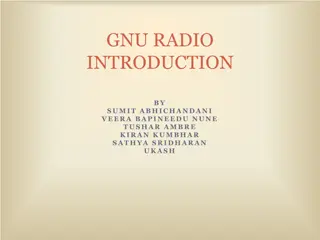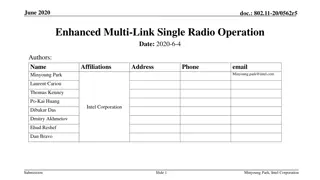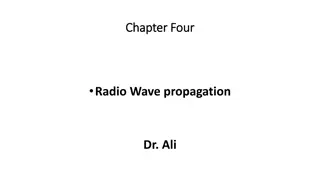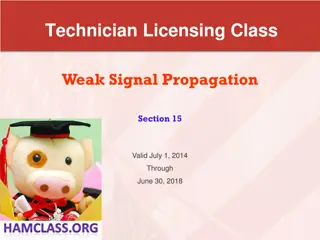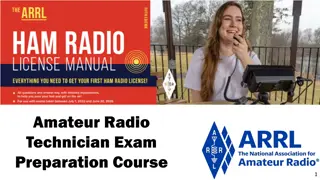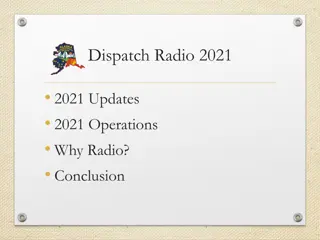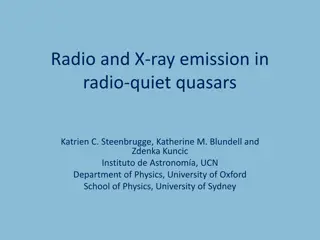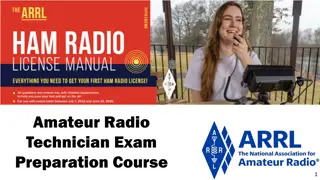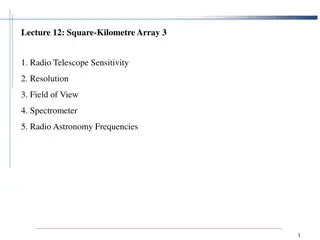Principles of Radio Bulletin Preparation
Radio bulletins consist of written scripts, voice reports, and actualities that are carefully chosen and arranged based on news criteria. Understand the importance of balance and pacing to create engaging and informative bulletins for different audiences.
Download Presentation

Please find below an Image/Link to download the presentation.
The content on the website is provided AS IS for your information and personal use only. It may not be sold, licensed, or shared on other websites without obtaining consent from the author.If you encounter any issues during the download, it is possible that the publisher has removed the file from their server.
You are allowed to download the files provided on this website for personal or commercial use, subject to the condition that they are used lawfully. All files are the property of their respective owners.
The content on the website is provided AS IS for your information and personal use only. It may not be sold, licensed, or shared on other websites without obtaining consent from the author.
E N D
Presentation Transcript
NEWS BULLETIN FOR RADIO The principles of bulletin preparation: Radio bulletins are usually made up from three types of material: written stories in the form of a script; voice reports from journalists, either recorded or live; perhaps taken from an interview or a speech. A short segment of actuality is called a grab. Grabs are used in a similar way to quotes in a newspaper story. In some countries, grabs are called cuts or inserts. recorded sound called actuality. This is usually the sound of someone speaking,
Preparing a bulletin should not be difficult if you remember the basic principles of news reporting. Remind yourself of the criteria for what is news: Is it new, unusual, interesting, significant and about people?
Each of these criteria will help you to decide what stories you should include in your bulletin and where you should place them within your five, 10 or 15 minutes. It is usual to give the most important story first and the least important story last. If you are putting together your first bulletin, stick to this technique.
The two main factors you have to consider are the overall order or balance of the bulletin and the pace of it.
BALANCE Try to avoid seeing the bulletin simply as a collection of individual, self-contained stories. If you put a string of economic stories (however important) at the start of the bulletin, you risk losing your listeners' interest. They expect a balance of items, some heavy and some light, some about major political events and some about ordinary people.
Serious national broadcasters tend to use more serious stories, delivered in a more deliberate style whereas youth-oriented music station bulletins might be lighter and brighter with more stories about popular culture.
PACE By pace we mean the length and tone of a story as it appears to the listeners. Some stories have a fast pace. The report of a fire, for example, will usually be written in short sentences, using short snappy words to convey simple ideas. It will have a fast pace. Too many long complicated stories will slow the pace of the whole bulletin and allow the attention of your listeners to wander. Too many short, sharp stories may leave listeners confused, unable to keep up with the pace of changing stories.
Your ideal bulletin will have a steady pace throughout to maintain interest, slower at times to let your listeners catch their breath or faster at other times to pick up their lagging interest. How do you achieve balance and pace in practice? You should rank your stories in order of importance then look at the order afresh, to see that you have a good balance of items and variations in pace.
FIND CAMERA SHOTS AND ANGLES HERE https://www.studiobinder.com/blog/types-of-camera-shot-angles-in-film/


